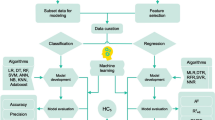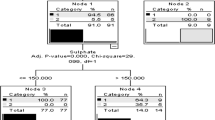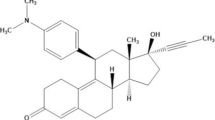Abstract
The toxic substances, pesticides, and organic contaminants in effluents can potentially be causing damage that includes increased cancer risk; liver, kidney, stomach, nervous system, and immune system problems; reproductive difficulties; cataracts; and anemia. A quantitative structure–retention relationship (QSRR) was developed using the partial least square (PLS), kernel PLS (KPLS), and Levenberg–Marquardt artificial neural network (L–M ANN) approach for chemometrics study. The data which contained retention time (RT) of the 47 hazardous compounds in effluents were obtained by reverse-phase high-performance liquid chromatography. Genetic algorithm was employed as a factor selection procedure for PLS and KPLS modeling methods. By comparing the results, GA-PLS descriptors are selected for L–M ANN. Finally, a model with a low prediction error and a good correlation coefficient was obtained by L–M ANN. The described model does not require experimental parameters and potentially provides useful prediction for RT of new compounds. This is the first research on the QSRR of hazardous compounds in effluents using the chemometrics models.




Similar content being viewed by others
References
Achma, R. B., Ghorbel, A., Sayadi, S., Dafinov, A., & Medina, F. (2008). A novel method of copper-exchanged aluminum-pillared clay preparation for olive oil mill wastewater treatment. Journal of Physics and Chemistry of Solids, 69, 1116–1120.
Ali, S. A., Sabae, S. Z., Fayez, M., Monib, M., & Hegazi, N. A. (2011). The influence of agro-industrial effluents on River Nile pollution. Journal of Advanced Research, 2, 85–95.
Bodzioch, K., Durand, A., Kaliszan, R., Bączek, T., & Vander Heyden, Y. (2010). Advanced QSRR modeling of peptides behavior in RPLC. Talanta, 81, 1711–1718.
Bolanča, T., Cerjan-Stefanović, S., Regelja, M., Regelja, H., & Lončarić, H. (2005). Development of an inorganic cations retention model in ion chromatography by means of artificial neural networks with different two-phase training algorithms. Journal of Chromatography. A, 1085, 74–85.
Chamjangali, M. A., Beglari, M., & Bagherian, G. (2007). Prediction of cytotoxicity data (CC50) of anti-HIV 5-pheny-l-phenylamino-1H-imidazole derivatives by artificial neural network trained with Levenberg–Marquardt algorithm. J. Mol. Graphics Modell., 26, 360–367.
Deeb, O. (2010). Correlation ranking and stepwise regression procedures in principal components artificial neural networks modeling with application to predict toxic activity and human serum albumin binding affinity. Chemometrics and Intelligent Laboratory Systems, 104, 181–194.
Durcekova, T., Boronova, K., Mocak, J., Lehotay, J., & Cizmarik, J. (2012). QSRR models for potential local anaesthetic drugs using high performance liquid chromatography. Journal of Pharmaceutical and Biomedical Analysis, 59, 209–16.
Farkas, O., Zenkevich, I. G., Stout, F., Kalivas, J. H., & Héberger, K. (2008). Prediction of retention indices for identification of fatty acid methyl esters. Journal of Chromatography. A, 1198–1199, 188–195.
Gupta, V. K., Khani, H., Ahmadi-Roudi, B., Mirakhorli, S., Fereyduni, E., & Agarwal, S. (2011). Prediction of capillary gas chromatographic retention times of fatty acid methyl esters in human blood using MLR, PLS and back-propagation artificial neural networks. Talanta, 83, 1014–1022.
Gutiérrez, S., Fernández, C., Escher, B. I., & Tarazona, J. (2008). A new hazard index of complex mixtures integrates bioconcentration and toxicity to refine the environmental risk assessment of effluents. Environment International, 34, 773–781.
Héberger, K., & Zenkevich, I. G. (2010). Comparison of physicochemical and gas chromatographic polarity measures for simple organic compounds. Journal of Chromatography. A, 1217, 2895–2902.
Hemmateenejad, B., Shamsipur, M., Safavi, A., Sharghi, H., & Amiri, A. A. (2008). Reversed-phase high performance liquid chromatography (RP-HPLC) characteristics of some 9,10-anthraquinone derivatives using binary acetonitrile–water mixtures as mobile phase. Talanta, 77, 351–359.
Hernández-Caraballo, E. A., Rivas, F., Pérez, A. G., & Marcó-Parra, L. M. (2005). Evaluation of chemometric techniques and artificial neural networks for cancer screening using Cu, Fe, Se and Zn concentrations in blood serum. Analytica Chimica Acta, 533, 161–168.
Jia, R., Mao, Z., Chang, Y., & Zhang, S. (2010). Kernel partial robust M-regression as a flexible robust nonlinear modeling technique. Chemometrics and Intelligent Laboratory Systems, 100, 91–98.
Kannan, A., & Upreti, R. K. (2008). Influence of distillery effluent on germination and growth of mung bean (Vigna radiata) seeds. Journal of Hazardous Materials, 153, 609–615.
Kaur, A., Vats, S., Rekhi, S., Bhardwaj, A., Goel, J., Tanwar, R. S., & Gaur, K. K. (2010). Physico-chemical analysis of the industrial effluents and their impact on the soil microflora. ProcEnviron. Sci., 2, 595–599.
Kim, K., Lee, J., & Lee, I. (2005). A novel multivariate regression approach based on kernel partial least squares with orthogonal signal correction. Chemometrics and Intelligent Laboratory Systems, 79, 22–30.
Liu, T., Nicholls, I. A., & Öberg, T. (2011). Comparison of theoretical and experimental models for characterizing solvent properties using reversed phase liquid chromatography. Analytica Chimica Acta, 702, 37–44.
Matteis, C. I. D., Simpson, D. A., Doughty, S. W., Euerby, M. R., Shaw, P. N., & Barrett, D. A. (2010). Chromatographic retention behaviour of n-alkylbenzenes and pentylbenzene structural isomers on porous graphitic carbon and octadecyl-bonded silica studied using molecular modelling and QSRR. Journal of Chromatography, 1217, 6987–6993.
Noorizadeh, H., Farmany, A. (2011). Determination of partitioning of drug molecules using immobilized liposome chromatography and chemometrics methods, Drug Testing and Analysis (in press)
Noorizadeh, H., Farmany, A., Noorizadeh, M. (2011). Application of GA–KPLS and L–M ANN calculations for the prediction of the capacity factor of hazardous psychoactive designer drugs, Medicinal Chemistry Research (in press)
Sagrado, S., & Cronin, M. T. D. (2008). Application of the modelling power approach to variable subset selection for GA-PLS QSRR models. Analytica Chimica Acta, 609, 169–174.
Sánchez, L. E., & Morrison-Saunders, A. (2011). Learning about knowledge management for improving environmental impact assessment in a government agency: The Western Australian experience. Journal of Environmental Management, 92, 2260–2271.
Sarıpınar, E., Geçen, N., Şahin, K., & Yanmaz, E. (2010). Pharmacophore identification and bioactivity prediction for triaminotriazine derivatives by electron conformational-genetic algorithm QSRR method. European Journal of Medicinal Chemistry, 45, 4157–4168.
Souza, E. S., Kuhnen, C. A., Junkes, B. S., Yunes, R. A., & Heinzen, V. E. (2009). Quantitative structure–retention relationship modelling of esters on stationary phases of different polarity. Journal of Molecular Graphics and Modelling, 28, 20–27.
Todeschini, R., Consonni, V., Mauri, A., Pavan, M. (2003). DRAGON–Software for the calculation of molecular descriptors; version 3.0 for Windows.
Youngstrom, E., Kenworthy, L., Lipkin, P. H., Goodman, M., Squibb, K., Mattison, D. R., Anthony, L., Makris, S. L., Bale, A. S., Raffaele, K. C., & LaKind, L. S. (2011). A proposal to facilitate weight-of-evidence assessments: Harmonization of Neurodevelopmental Environmental Epidemiology Studies (HONEES). Neurotoxicology and Teratology, 33, 354–359.
Author information
Authors and Affiliations
Corresponding author
Rights and permissions
About this article
Cite this article
Karimi, H., Farmany, A. & Noorizadeh, H. Chemometrics analysis for investigation of retention behavior of hazardous compounds in effluents. Environ Monit Assess 185, 473–483 (2013). https://doi.org/10.1007/s10661-012-2568-2
Received:
Accepted:
Published:
Issue Date:
DOI: https://doi.org/10.1007/s10661-012-2568-2




